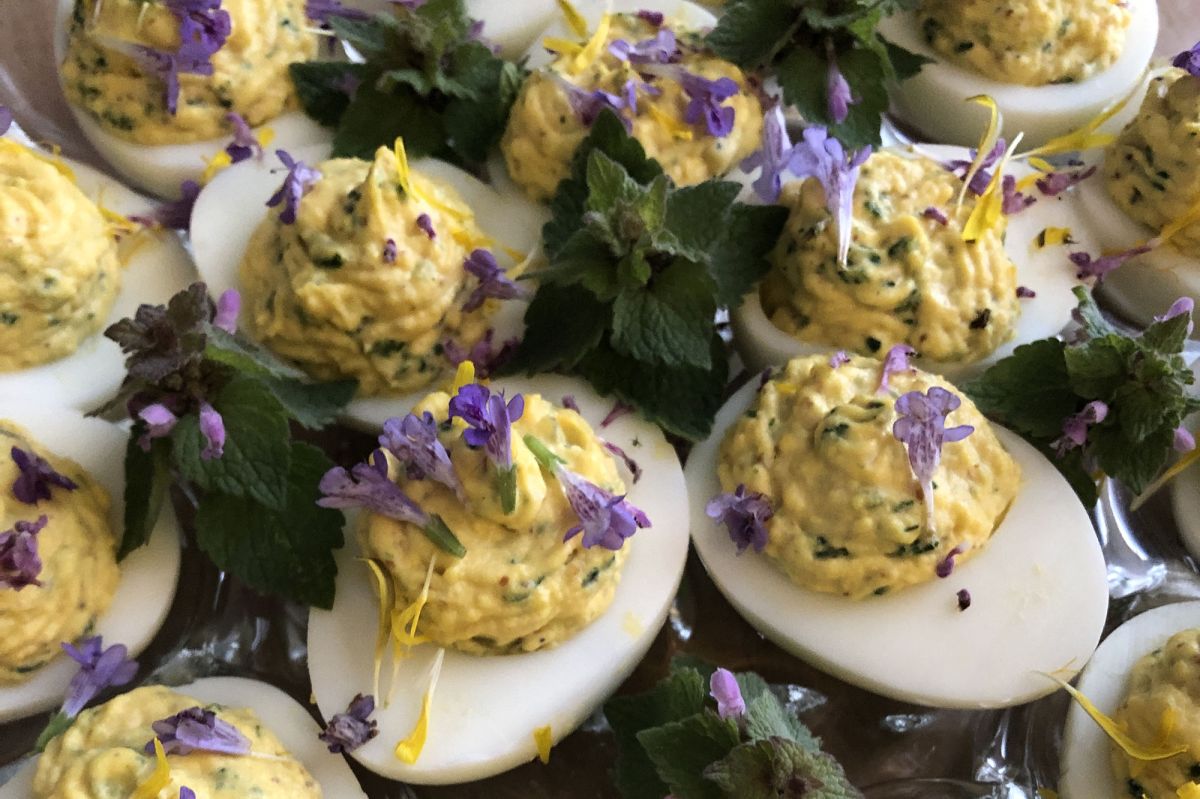
If you pluck the tiny flowers from the purple deadnettle tops (pictured here between the egg halves), you can scatter them accoss the finished deviled eggs as a garnish. (Kayte Young/ WFIU)
I have purple deadnettle all over my yard. It is a weed with shallow roots, so it’s not too difficult to remove from a garden bed—in other words, I don’t have anything against it. But I didn’t know it was edible until I read about it in a newsletter from The Wild Grocery. They offered a recipe for purple deadnettle brown butter, and they shared a link to a recipe for purple deadnettle deviled eggs. That recipe is from The Intrepid Eater blog, and I used it as a jumping off point for this recipe.
Inspired by The Wild Grocery and The Intrepid Eater.
Ingredients
6-10 oz purple deadnettle leaves (removed from stem)
10 hard-boiled eggs
4 tablespoons mayonnaise
1 tablespoon mustard (Dijon, or whichever type you prefer)
2 teaspoons pickle relish (sweet or dill—or both!)
4-5 marinated artichoke hearts, finely chopped (optional)
½ teaspoon Kosher salt
¼ teaspoon black pepper
Dash of cayenne pepper
Paprika (for sprinkling on top of the eggs)
Pickled red bud (optional garnish)
Finely chopped onion grass (optional garnish)
Preparation
Save any purple flowers from the deadnettle tops, they can be used as a garnish
Bring a half pot of water to a boil, add the nettle leaves and boil for 2 minutes.
Drain and rinse under cold water, squeeze dry, then chop finely.
Cut eggs in half lengthwise, then gently scoop out the yolks into a medium-sized bowl.
Add the chopped deadnettle and the rest of the ingredients (except the paprika), and mix well. A potato masher comes in handy, here.
Fill a piping bag with the egg yolk mixture (or re-use a ziplock bag). Put the bag inside of a tall, sturdy glass to make it easier to fill. I find it quicker and easier to pipe the filling, but you can certainly spoon it into each egg white half.
Garnish the eggs with paprika and the tiny purple flowers from the purple deadnettle (plus the pickled red bud and chopped onion grass, if you’re using those).













